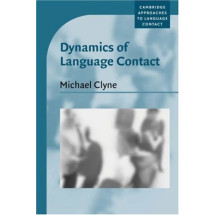I Preliminaries
1 Introduction
1.1 Rationalist and Empiricist Approaches to Language
1.2 Scientific Content
1.3 The Ambiguity of Language: Why NLP Is Difficult
1.4 Dirty Hands
1.5 Further Reading
1.6 Exercises
2 Mathematical Foundations
2.1 Elementary Probability Theory
2.2 Essential Information Theory
2.3 Further Reading
3 Linguistics Essentials
3.1 Parts of Speech and Morphology
3.2 Phrase Structure
3.3 Semantics and Pragmatics
3.4 Other Areas
3.5 Further Reading
3.6 Exercises
4 Corpus-Based Work
4.1 Getting Set Up
4.2 Looking at Text
4.3 Marked-Up Data
4.4 Further Reading
4.5 Exercises
II Words
5 Collocations
5.1 Frequency
5.2 Mean and Variance
5.3 Hypothesis Testing
5.4 Mutual Information
5.5 The Notion of Collocation
5.6 Further Reading
6 Statistical Inference: n-gram Models over Sparse Data
6.1 Bins: Forming Equivalence Classes
6.2 Statistical Estimators
6.3 Combining Estimators
6.4 Conclusions
6.5 Further Reading
6.6 Exercises
7 Word Sense Disambiguation
7.1 Methodological Preliminaries
7.2 Supervised Disambiguation
7.3 Dictionary-Based Disambiguation
7.4 Unsupervised Disambiguation
7.5 What Is a Word Sense?
7.6 Further Reading
7.7 Exercises
8 Lexical Acquisition
8.1 Evaluation Measures
8.2 Verb Subcategorization
8.3 Attachment Ambiguity
8.4 Selectional Preferences
8.5 Semantic Similarity
8.6 The Role of Lexical Acquisition in Statistical NLP
8.7 Further Reading
III Grammar
9 Markov Models
9.1 Markov Models
9.2 Hidden Markov Models
9.3 The Three Fundamental Questions for HMMs
9.4 HMMs: Implementation, Properties, and Variants
9.5 Further Reading
10 Part-of-Speech Tagging
10.1 The Information Sources in Tagging
10.2 Markov Model Taggers
10.3 Hidden Markov Model Taggers
10.4 Transformation-Based Learning of Tags
10.5 Other Methods, Other Languages
10.6 Tagging Accuracy and Uses of Taggers
10.7 Further Reading
10.8 Exercises
11 Probabilistic Context Free Grammars
11.1 Some Features of PCFGs
11.2 Questions for PCFGs
11.3 The Probability of a String
11.4 Problems with the Inside-Outside Algorithm
11.5 Further Reading
11.6 Exercises
12 Probabilistic Parsing
12.1 Some Concepts
12.2 Some Approaches
12.3 Further Reading
12.4 Exercises
IV Applications and Techniques
13 Statistical Alignment and Machine Translation
13.1 Text Alignment
13.2 Word Alignment
13.3 Statistical Machine Translation
13.4 Further Reading
14 Clustering
14.1 Hierarchical Clustering
14.2 Non-Hierarchical Clustering
14.3 Further Reading
14.4 Exercises
15 Topics in Information Retrieval
15.1 Some Background on Information Retrieval
15.2 The Vector Space Models
15.3 Term Distribution Models
15.4 Latent Semantic Indexing
15.5 Discourse Segmentation
15.6 Further Reading
15.7 Exercises
16 Text Categorization
16.1 Decision Trees
16.2 Maximum Entropy Modeling
16.3 Perceptrons
16.4 k Nearest Neighbor Classification
16.5 Further Reading












